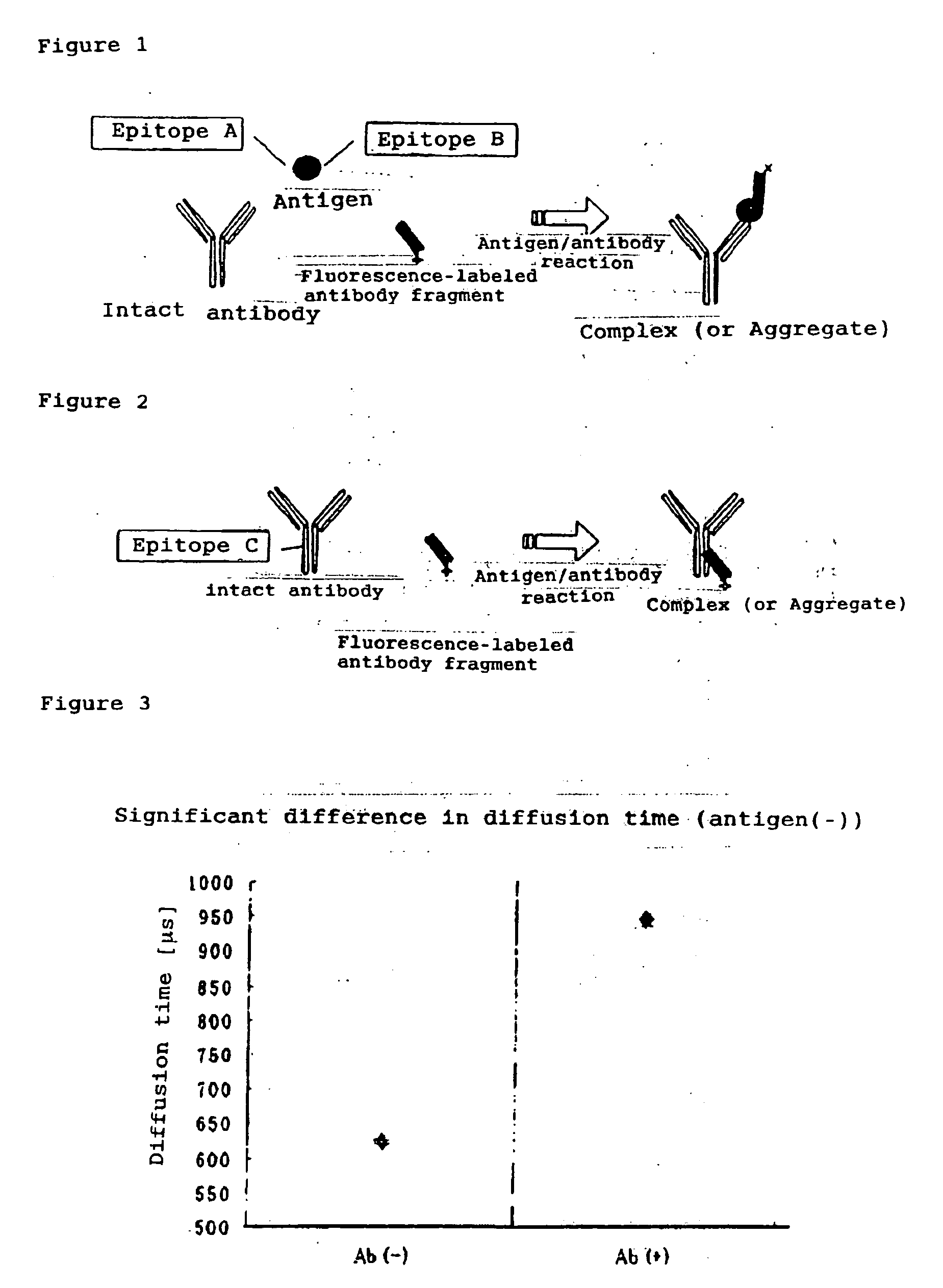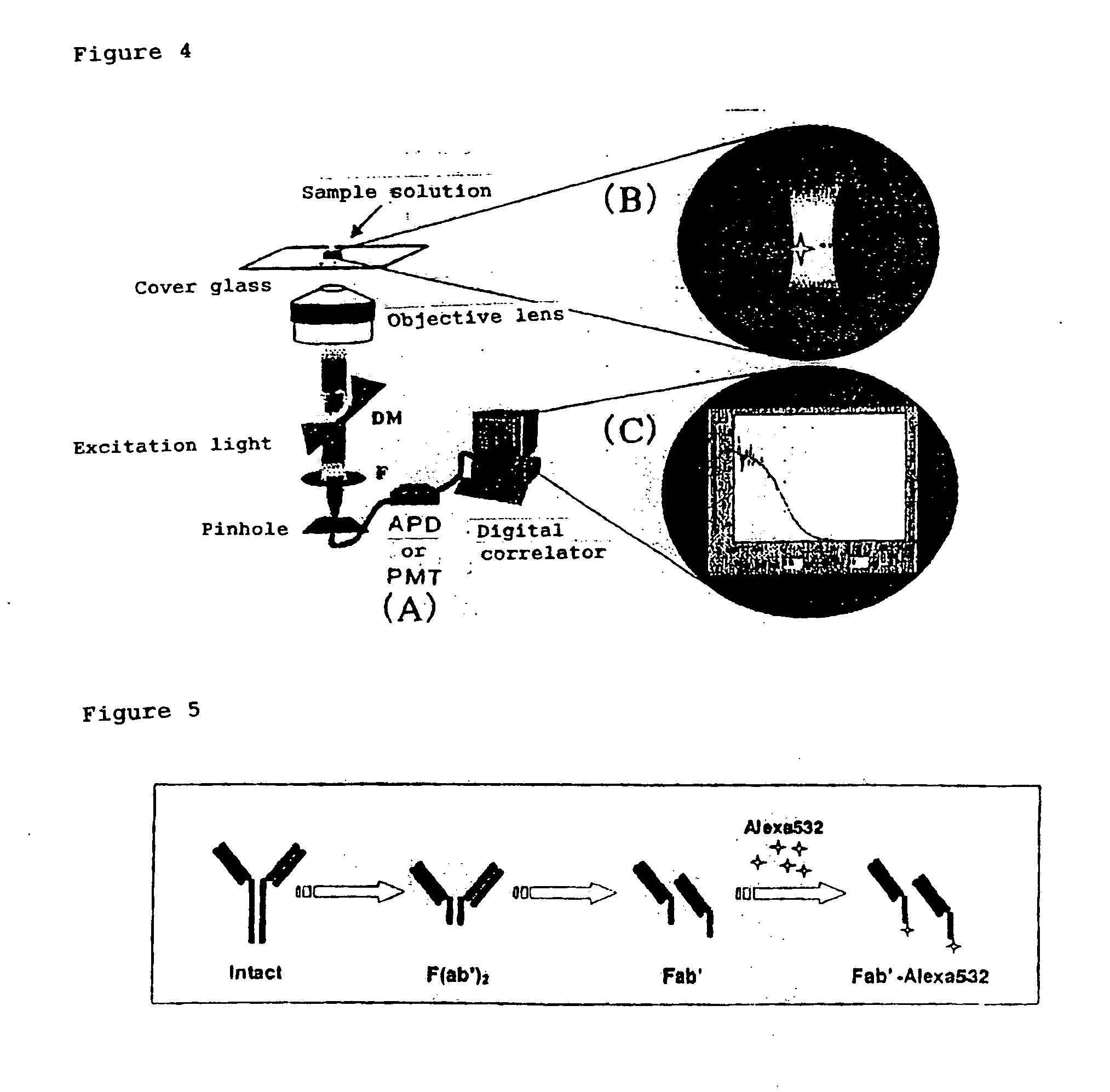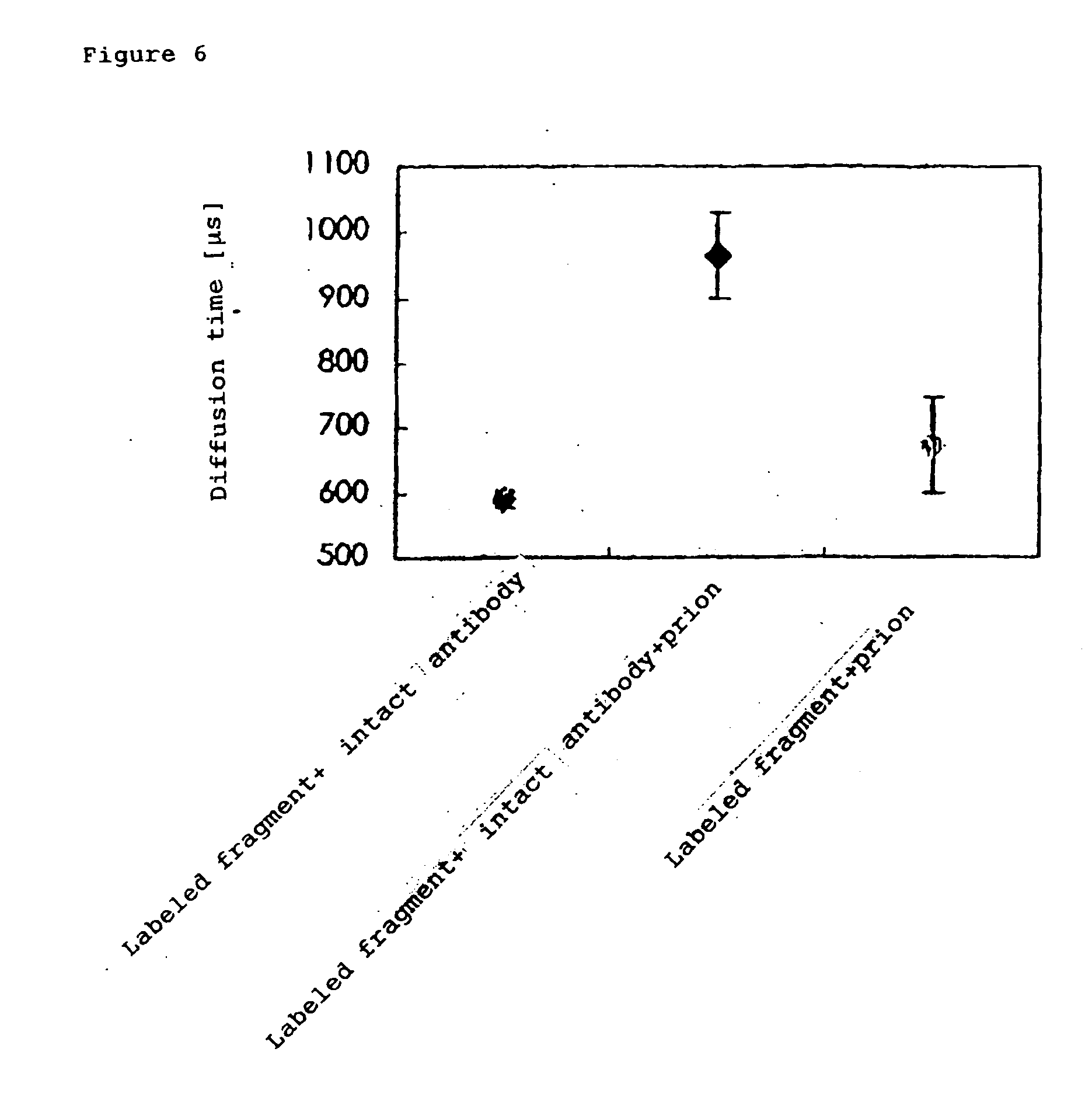Method of quickly detecting and/or assaying antigen by fluorescence correlation spectrometry
a fluorescence correlation and antigen technology, applied in the field of fast detection and/or assaying an antigen, can solve the problems of animal death, brain spongiform, abnormal prions at those particular sites, etc., and achieve the effect of quick and convenien
- Summary
- Abstract
- Description
- Claims
- Application Information
AI Technical Summary
Benefits of technology
Problems solved by technology
Method used
Image
Examples
example 1
Influence of a Non-fluorescence-labeled Intact Antibody on Diffusion Rate
(1) Materials:
[0069] Alexa Fluor 647 (Zenon One Mouse IgG1 Labeling Kit) [0070] Fab 647 (Zenon One IgG1 Labeling Reagent) [0071] Antibody (indicated by Ab in FIG. 2) (Zenon One Blocking Reagent (mouse IgG))
(2) Apparatus for FCS Assay: [0072] MF-20 (intermolecular interaction analysis system: Olympus Corp.)
(3) Procedures: [0073] A solution of 10 nM Fab 647 (mouse IgG antibody) alone and a Fab 647 mixture obtained by mixing Fab 647 with 100 nM intact antibody were applied to a 384-well plate (Olympus) blocked with N101 (NOF Corp.), followed by assay with MF20 (Olympus). The assay was performed by 30 sec.×three measurements at a laser power set to 100 μW. The processing software in MF20 was used to derive each parameter including diffusion time.
[0074] To test how a non-fluorescence-labeled intact antibody can influence the diffusion rate in the Brownian motion of an antigen / antibody complex molecule, an in...
example 2
Detection and Assay of Antigen (Antigenic Protein) using FCS
(1) Apparatus
[0076] FCS apparatus [0077] Intermolecular interaction analysis system (MF-20, manufactured by Olympus Corp.)
(2) Materials [0078] Preparation of fluorescence-labeled antibody fragment
[0079] In this Example, the fluorescence-labeled antibody fragment (Fab′-Alexa 532) of an anti-prion antibody was taken as an example. The outline of preparation of Fab′-Alexa 532 is shown in FIG. 5. An anti-PrP antibody solution was equilibrated with a citric acid solution (pH 6.3) by use of a PD-10 column (Pharmacia) and then supplemented (37° C., approximately 30 minutes) with pepsin (1% (w / w)) to prepare F(ab′)2. The degree of the digestion was confirmed by HPLC (column: G300SWXL). Then, the fragment was purified by FPLC (column: Superdex 200 (16 / 60)) using 0.1 M phosphate buffer solution (pH6.3), then concentrated, and stored. It was further reduced (37° C., approximately 1.5 hours) by the addition of 2-mercaptomethylami...
PUM
| Property | Measurement | Unit |
|---|---|---|
| molecular weight | aaaaa | aaaaa |
| molecular weight | aaaaa | aaaaa |
| volume | aaaaa | aaaaa |
Abstract
Description
Claims
Application Information
 Login to View More
Login to View More - R&D
- Intellectual Property
- Life Sciences
- Materials
- Tech Scout
- Unparalleled Data Quality
- Higher Quality Content
- 60% Fewer Hallucinations
Browse by: Latest US Patents, China's latest patents, Technical Efficacy Thesaurus, Application Domain, Technology Topic, Popular Technical Reports.
© 2025 PatSnap. All rights reserved.Legal|Privacy policy|Modern Slavery Act Transparency Statement|Sitemap|About US| Contact US: help@patsnap.com



